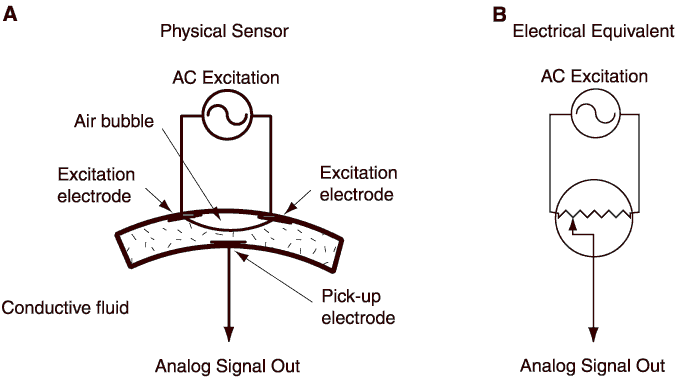Figure F11. A schematic representation of the principle of operation of the tilt sensors. A. The physical sensor that consists of a conducting liquid in a curved tubular container. As the unit undergoes tilt, an air bubble moves relative to the excitation electrodes and results in changes in the output signal detected at the pickup electrode. An alternating-current (AC) bridge is necessary since the liquid can be polarized and permanently damaged if a direct-current voltage is applied to the sensor. B. The equivalent electrical circuit.

![]()